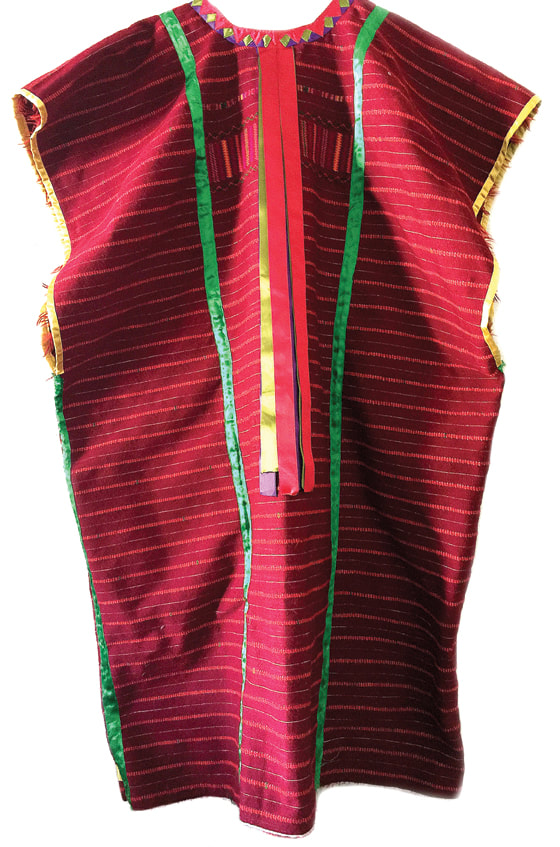|
Mexican native women weave their huipiles (dresses) with their souls. Margarita Bautista lives in Anchorage and wears her huipil on special occasions. She proudly proclaims that she made her huipil in three weeks, but it can take a year or more to weave a Triqui huipil. The tradition of back strap weaving—where the weaver sits on one end of the loom and the other is tied to a tree—is passed down from their mothers and grandmothers.
Most of the designs in the huipil are symbolic. The pattern of the collar represents the rays of the sun (which is meant to be the head of the woman wearing the huipil), and the colored ribbons hanging from the collar form a rainbow. The whole garment symbolizes the cycle of the butterfly. The central design, or mother figure, is formed from several bars of colors, symbolizing cocoons. The surrounding figures incorporate the trail of the butterfly in flight. The rest of the lines represent the metamorphosis from caterpillar to butterfly. The white part below stands for death but is followed by another red part, symbolizing the cycle of rebirth after death. The huipil is part of the most special moments of Triqui women. Margarita explains that in the celebration of a wedding there is a change of huipil, which is when the women form a circle around the bride, help her put on her new huipil, and adorn her with necklaces, ribbons, and flowers for her hair. The huipil and the Triqui traditions have migrated with the women and their families. The Triqui children are mostly trilingual, since they keep their language, and also learn Spanish and English. However, language remains a challenge for those arriving in the United States, on top of learning how to drive and finding good job opportunities. Margarita is well known for her food. Her tortillas are the size of two hands held together. Her daughter recently graduated from elementary school and Margarita held a celebration full of pozole, meat taquitos, salsa, cake, and flowers. Celebrations, the Triquis say, are the best opportunity to bring family and friends together. Some of the new Triqui generations growing in the United States embrace their culture with joy and honor while reinterpreting and transforming it. Such is the case with the huipil; the textiles with which the traditional huipil is made are so worn in the style of blouses and even as strapless tops. The Triqui huipil has survived the ambushes of colonization, and now globalization, because it is more than a piece of cloth. It is a symbol of dignity and resistance. Whether made traditionally, or transformed, the huipil is a signature of Triqui identity. |
